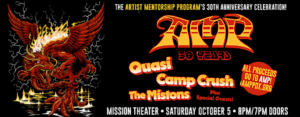Written By: Daniel Cina
Cannabis has a long and storied history dating back thousands of years, and its use has transcended on a cultural level. In the rich history of cannabis usage one particular product has stood out among the rest as one of the most intriguing and potent forms of cannabis. Today we will be talking about hashish aka hash, a concentrated resinous product that has been cherished by cannabis enthusiasts for thousands of years. In this article, we’ll delve into the world of hashish, exploring its origins, production methods, effects, and cultural significance.
The Eastern Origins of Hashish Cannabis
 Hashish has strong roots in ancient cannabis cultivation. It can be traced back to the Neolithic period, and its consumption can be traced all the way back to the 11th century. It is also likely that hashish alongside cannabis was traded along the Silk Road as a valuable incense, reaching numerous regions such as Iraq, Iran, Afghanistan, Pakistan, India, The Arabian Peninsula, and Eastern Asia. Historically it is difficult to pinpoint the exact location of hashish’s origin due to its longstanding use and trade, but it is generally accepted that these regions traded and created their own variations of the product.
Hashish has strong roots in ancient cannabis cultivation. It can be traced back to the Neolithic period, and its consumption can be traced all the way back to the 11th century. It is also likely that hashish alongside cannabis was traded along the Silk Road as a valuable incense, reaching numerous regions such as Iraq, Iran, Afghanistan, Pakistan, India, The Arabian Peninsula, and Eastern Asia. Historically it is difficult to pinpoint the exact location of hashish’s origin due to its longstanding use and trade, but it is generally accepted that these regions traded and created their own variations of the product.
Some of the earliest mentions of the product can be found in Middle Eastern literature such as the 10th century Book of Poisons by Iraqi Alchemist Ibn Wahshiyya or the even more popular 11th century book known as Arabian Nights.
Hashish is also the center of historical legend surrounding one of history’s most secretive and notorious religious sects, the Nizari Ismalis aka the Order of Assassins. This sect was formed in the late 11th century with their main strongholds in Persia and Syria. Furthermore the term assassin when translated to the Persian dialect of the time is believed to be Hashashin giving us a perfect example of the reach that cannabis’ etymology possesses. 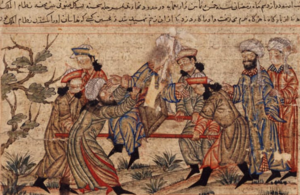
The legend goes that the group’s founder Hassan-i Sabbah was a consumer of hashish and is said to have shared with his disciples in order to instill loyalty as well as to allegedly enhance fearlessness. This legend was also enhanced by rival sects who derogatorily spread rumors that the assassins were hashish eaters in a bid to slander the group. Like rumors in today’s world, the rumors spread about the assassins weren’t necessarily based in fact.
The use of hashish by the Order of Assassins is a highly debated historical topic among scholars in terms of validity, as their has been no definitive historical written record or archaeological evidence linking the two other than they both existed in the same regions during the same time-period. Despite this scholarly historical debate, the existence of the legend itself shows how deep-rooted the connection is between cannabis and human culture.
Movement of Hash into Western Culture
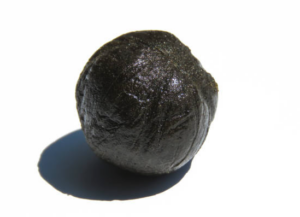 Much like cannabis, hashish found its way into new regions through trade, war, and interactions between different cultures. Through cultural exchange on the Arabian peninsula, hashish became highly popular in Egypt during the medieval era, and served as a staging point for the product to reach even further. It is believed that from Egypt, the product further spread to even more regions throughout the grand exchange of cultures in history.
Much like cannabis, hashish found its way into new regions through trade, war, and interactions between different cultures. Through cultural exchange on the Arabian peninsula, hashish became highly popular in Egypt during the medieval era, and served as a staging point for the product to reach even further. It is believed that from Egypt, the product further spread to even more regions throughout the grand exchange of cultures in history.
During the Medieval period hashish found its way to one of its modern day havens. It is thought by scholars that nomadic Berber tribes who are known to have traveled all over North Africa acquired it in Egypt and brought it back to Morocco who would become a major producer in the subsequent centuries and into the modern era.
While the product most likely made its way to Europe at some point in some form earlier in time, its documented travel from Egypt can be traced to the French Occupation of the country by Napoleon Bonaparte in 1798. Interestingly enough, Napoleon attempted to prohibit hashish in the country, citing it interfered with rational thought but its popularity proved to be too great in the region for an effective prohibition. Ironically the popularity of hashish spread to Napoleon’s forces in the Armée d’Orient who brought it back to France.
 In 1843 a club of hash consumers was formed in Paris who were known as the Le Club des Hashischins. This club of cannabis enthusiasts met at the Hôtel Pimodan which is the modern day Hôtel de Lauzun. Members of this club featured Paris’ intellectual elite including famed writers Alexandre Dumas, Victor Hugo, and Honoré de Balzac. Members of this club had high interest in the substance due to their belief that it could heighten their artistry and creativity.
In 1843 a club of hash consumers was formed in Paris who were known as the Le Club des Hashischins. This club of cannabis enthusiasts met at the Hôtel Pimodan which is the modern day Hôtel de Lauzun. Members of this club featured Paris’ intellectual elite including famed writers Alexandre Dumas, Victor Hugo, and Honoré de Balzac. Members of this club had high interest in the substance due to their belief that it could heighten their artistry and creativity.
The 1960’s saw a surge of travelers from Western countries including the U.S.A. who went on massive road trips that started in Europe, went through Central Asia, and typically ended in India or Thailand. The common routes these travelers took would become known as the Hippie Trail. Whether these travelers were searching for thrill, spiritual enlightenment, or a good time, a major draw of the Hippie Trail was easy access to inexpensive and legal drugs including cannabis and hash. The massive influx of travelers on the Hippie Trail led to further normalization of the plant in European and American counter culture which contributed to the inception of the modern era of cannabis in Western Countries.
Hash Production Methods
Production involves the extraction of trichomes which are the crystal-like resin glands that rest on the exterior of the cannabis plant. Trichomes are the cannabinoid factory for the plant and are responsible for its psychoactive effects through its production of THCA, CBD,CBG,CBN and many other cannabinoids. Once the trichomes are collected, they are then compressed to form a bricks of hash. It is also one of the most preferred products to press to create rosin due to its high quality.
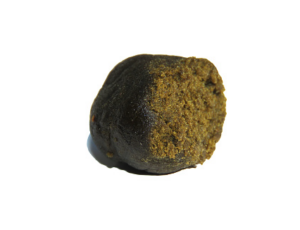 The extraction methods vary from traditional ways that have been in use for countless generations to the modern methods for products that we see today.
The extraction methods vary from traditional ways that have been in use for countless generations to the modern methods for products that we see today.
- Hand-Rubbed : This traditional method involves gently rubbing mature cannabis plants between the hands, collecting the trichomes and their resin on the palms and fingers. What is collected is then rolled into small balls or bricks. This labor-intensive process results in high-quality, artisanal hashish.
- Dry Sift : In this method, cannabis flowers are placed on screens or sieves, and then gently shaken. The trichomes fall through the screens and are collected as a fine powder. This powder can be further compressed to create hash.
- Bubble Hash: This form of hash is made using ice water and agitation. Cannabis trim or flowers are mixed with ice water, causing the trichomes to freeze and become brittle. The mixture is then agitated to separate the trichomes, which are collected and dried. When the finished product is compressed between two heated discs you are left with an amazing bubble hash rosin!
- Solvent-Based: Some modern methods use solvents like butane or CO2 to extract trichomes from cannabis. These methods are considered more efficient but require specialized equipment and safety precautions as most solvent based extractions require flammable materials. ***Do NOT Try This Yourself***
Effects of Hash Cannabis
Hash is one of the most potent forms of cannabis currently available today. Since it is made from trichomes, it has a very pure cannabinoid content resulting in more vivid psychoactive effects. With that being said the specific elevating effects of the product will be determined by the cannabis strain and its terpene profile.
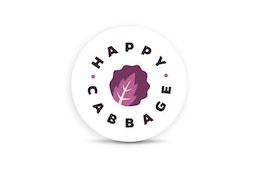 If this product is on your mind, then not to worry! We carry multiple products at Nectar, that will leave you with a premium and potent elevation. For all you edible enthusiasts, I would recommend Good Tide who carries exceptional 100mg hash rosin gummies. For all the concentrate lovers, I would recommend a bubble hash cartridge from Happy Cabbage Farms, one of the best brands in Oregon for this product. For those who prefer good old fashioned flower, be sure to check out the numerous infused pre-rolls that we carry at your local Nectar!
If this product is on your mind, then not to worry! We carry multiple products at Nectar, that will leave you with a premium and potent elevation. For all you edible enthusiasts, I would recommend Good Tide who carries exceptional 100mg hash rosin gummies. For all the concentrate lovers, I would recommend a bubble hash cartridge from Happy Cabbage Farms, one of the best brands in Oregon for this product. For those who prefer good old fashioned flower, be sure to check out the numerous infused pre-rolls that we carry at your local Nectar!
 Be sure to exercise caution when consuming this form of cannabis. It is highly potent, and I would recommend it for more seasoned stoners. If you are new to cannabis and want to try it out then be sure to consume in very small amounts as the chances for a green-out are much higher than other forms of cannabis. I was fortunate enough to try some premium Moroccan hash during my travels in Spain and can comfortably say it was one of the most elevating experiences I’ve ever had so be sure to exercise caution with this product.
Be sure to exercise caution when consuming this form of cannabis. It is highly potent, and I would recommend it for more seasoned stoners. If you are new to cannabis and want to try it out then be sure to consume in very small amounts as the chances for a green-out are much higher than other forms of cannabis. I was fortunate enough to try some premium Moroccan hash during my travels in Spain and can comfortably say it was one of the most elevating experiences I’ve ever had so be sure to exercise caution with this product.
Hashish History Continues
Hash has played a significant role in many different cultures throughout history. Whether it was for recreation, medicinal purposes, or religious rituals, hash’s documented use across Eastern and Western cultures shows the deep-rooted connection that cannabis and its variations have been throughout 1000 years of history.
The world keeps turning and the use of this potent form of cannabis keeps turning with it. Across the globe, the popularity of this substance and the traditions behind it have only grown stronger in the modern era, thus continuing the chain of historical use that will one day also be told in the hashish’s amazing story across time. So the next time you head down to your local Nectar to enjoy premium hash based products or whatever cannabis product you prefer, remember that you are engaging with history and carrying part of the amazing story that is cannabis into the future.


